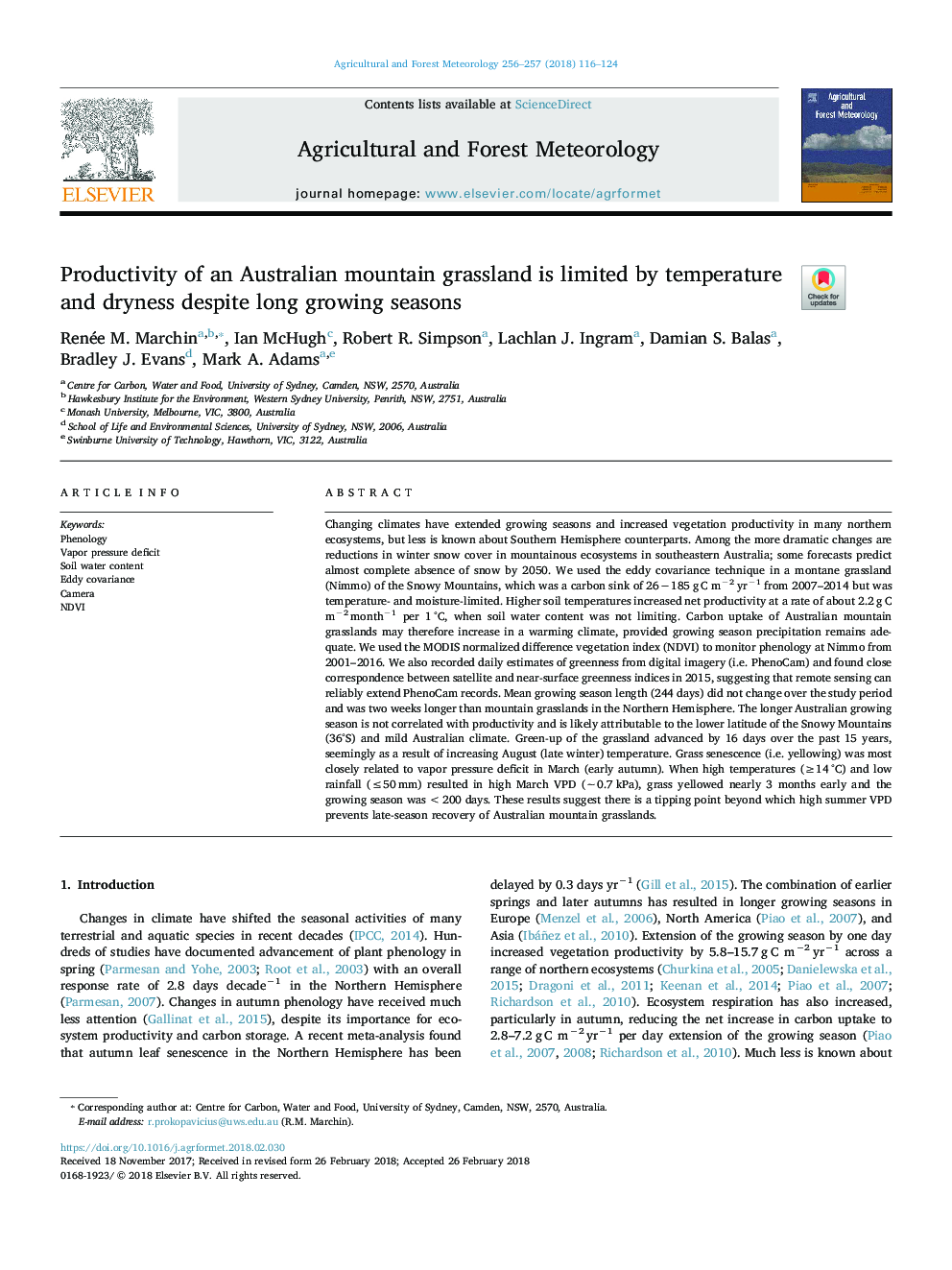| کد مقاله | کد نشریه | سال انتشار | مقاله انگلیسی | نسخه تمام متن |
|---|---|---|---|---|
| 6536686 | 1420847 | 2018 | 9 صفحه PDF | دانلود رایگان |
عنوان انگلیسی مقاله ISI
Productivity of an Australian mountain grassland is limited by temperature and dryness despite long growing seasons
ترجمه فارسی عنوان
بهره وری از یک علفزار کوهستانی استرالیا با وجود دما و خشکی، با وجود فصلهای طولانی در حال رشد، محدود شده است
دانلود مقاله + سفارش ترجمه
دانلود مقاله ISI انگلیسی
رایگان برای ایرانیان
کلمات کلیدی
موضوعات مرتبط
مهندسی و علوم پایه
علوم زمین و سیارات
علم هواشناسی
چکیده انگلیسی
Changing climates have extended growing seasons and increased vegetation productivity in many northern ecosystems, but less is known about Southern Hemisphere counterparts. Among the more dramatic changes are reductions in winter snow cover in mountainous ecosystems in southeastern Australia; some forecasts predict almost complete absence of snow by 2050. We used the eddy covariance technique in a montane grassland (Nimmo) of the Snowy Mountains, which was a carbon sink of 26â185â¯gâ¯C mâ2â¯yrâ1 from 2007-2014 but was temperature- and moisture-limited. Higher soil temperatures increased net productivity at a rate of about 2.2â¯gâ¯C mâ2â¯monthâ1 per 1â¯Â°C, when soil water content was not limiting. Carbon uptake of Australian mountain grasslands may therefore increase in a warming climate, provided growing season precipitation remains adequate. We used the MODIS normalized difference vegetation index (NDVI) to monitor phenology at Nimmo from 2001-2016. We also recorded daily estimates of greenness from digital imagery (i.e. PhenoCam) and found close correspondence between satellite and near-surface greenness indices in 2015, suggesting that remote sensing can reliably extend PhenoCam records. Mean growing season length (244 days) did not change over the study period and was two weeks longer than mountain grasslands in the Northern Hemisphere. The longer Australian growing season is not correlated with productivity and is likely attributable to the lower latitude of the Snowy Mountains (36°S) and mild Australian climate. Green-up of the grassland advanced by 16 days over the past 15 years, seemingly as a result of increasing August (late winter) temperature. Grass senescence (i.e. yellowing) was most closely related to vapor pressure deficit in March (early autumn). When high temperatures (â¥14â¯Â°C) and low rainfall (â¤50â¯mm) resulted in high March VPD (â¼0.7â¯kPa), grass yellowed nearly 3 months early and the growing season was <200 days. These results suggest there is a tipping point beyond which high summer VPD prevents late-season recovery of Australian mountain grasslands.
ناشر
Database: Elsevier - ScienceDirect (ساینس دایرکت)
Journal: Agricultural and Forest Meteorology - Volumes 256â257, 15 June 2018, Pages 116-124
Journal: Agricultural and Forest Meteorology - Volumes 256â257, 15 June 2018, Pages 116-124
نویسندگان
Renée M. Marchin, Ian McHugh, Robert R. Simpson, Lachlan J. Ingram, Damian S. Balas, Bradley J. Evans, Mark A. Adams,
